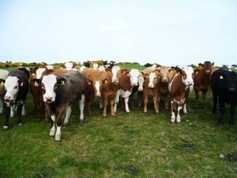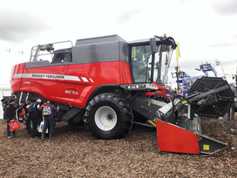The difficult spring combined with current weak weanling prices has got many farmers around the country considering reducing cow numbers to lower costs.
Before making any drastic decisions, farmers should realise that the weather and associated feed issues experienced over the past 12 months have been the exception rather than the norm.
Undoubtedly, for some farmers, reducing their cow numbers will be necessary, especially in situations where costs are so high that the cow cannot produce a weanling that will cover the cost of keeping her and return a margin for the farmer.
However, most farmers might be surprised to learn that this is only the case in a small minority of cases. There are several other factors that farmers need to assess before looking at reducing numbers.
Examine your costs
The first thing any farmer should do is examine their costs. Having a cost control planner, profit monitor or simply keeping a check on individual costs on a weekly and monthly basis is essential for any business or farm. Completing a yearly budget and reflecting on it on a monthly basis is crucial, especially in a time of un-planned high costs.
On typical suckler to weanling farms, the cow accounts for 85% of the overall feed budget. In suckler to beef systems, the cow accounts for 50% of the feed budget.
Because costs are low at grass during the summer months, the main cost associated with keeping a suckler cow is the wintering cost. Wintering costs account for 60% of the feed costs in a suckler to weanling system. This can vary greatly from farm to farm depending on land type, the length of the winter and the winter feeding strategy. The true wintering cost on the farm can easily be disguised through fertilizer, contractor, concentrate and straw costs.
Naturally, winter feeding costs will be higher in an autumn calving herd than a spring calving herd. Where there is just a spring calving herd run, every effort should be made to keep supplementation levels to a minimum. Silage is an expensive feed and the quality of silage made over summer months can greatly influence the volume of silage and supplementation required.
Having high quality silage on hand will allow farmers to restrict intake and supplement with straw, thus reducing the total silage requirement and costs. Ideally, we’re looking for a functional cow which can increase body condition score (BCS) at grass and utilise these reserves on restricted diet over the winter.
Supplementing calves at grass is another area which can increase the cost of production. There is a role for supplementation at grass, particularly around weaning time, and in the production of calves for specialist export markets.
However, studies have shown that where good grassland management is practiced during the summer months, equal levels of liveweight gain can be achieved on calves where calves are supplemented on average to poor quality grass.
Complete a cashflow plan or profit monitor to assess the financial performance of the herd.
Highlight high cost areas and look at methods of reducing costs.
Complete a budget and monitor cashflow monthly.
Get rid of freeloaders
Regardless of costs or your system, in a year where margins will be tight there is no room for freeloaders. Farmers should strive to have cows produce 0.95 calves per cow per year or greater.
Despite tight silage reserves and poor silage quality last year, many farmers did not scan cows and, in some cases, empty cows were carried needlessly over the winter period. This year, to keep costs low, it is essential that all cows are scanned and empty cows fed and slaughtered or sold live before the high cost winter.
These are cows that repeatedly produce a poor quality calf or have a prolonged calving interval.
Cull cows that produce poor quality calves or have a long calving interval.
Scan cows to highlight empties.
Sell/slaughter cows prior to the winter.
Focus on calving date and spread
In a low margin suckler system, efficiency of the herd as a whole is critical to profitability. The trap most farmers fall into is having a prolonged calving spread and not calving cows at the right time of year to maximise the use of grass while ensuring good weaning weights are achieved.
Research has shown that a 10-12 week calving period is the most profitable. Despite a heavy workload at calving, from a management point of view a tight calving spread leads to ease when herding and managing stock throughout the year.
It can often lead to a reduced number of grazing groups on the farm as the system can become simpler and more streamlined.
However, where calving periods are prolonged, it will take four to five years to bring them back in line.
Typically, you can aim to reduce the calving spread by a maximum of two to three weeks per year while avoiding excessive culling. Trying to tighten calving spreads more quickly by increasing the number of replacements and increased culling will lead to increased costs in the short term and should not be considered without detailed cashflow planning and budgeting to ensure that it is manageable in the short term.
Calving date should also be to the forefront of your mind. Ideally turnout should take place soon after the onset of calving in order to increase the proportion of grass in the diet. The turnout date will depend on the location of the farm and the soil type.
However, farmers should also look at bringing the turnout date forward in a bid to increase output. This can be done by improved grassland management and implementation of the planned closing of swards in autumn combined with a spring rotation plan.
Set dates for putting the bull in and out in order to tighten the caving interval.
Tightening the calving spread may take several years depending on the starting point.
Avoid excessive culling as a means to tightening the calving spread.
Extend the grazing season using spring and autumn grass rotation plans.
Calve cows to match grass growth.
Maximise output
The first step in maximising output is to ensure cows are producing greater than 0.95 calves per cow per year and calving every 365 days.
It is not price/kg that will determine farm profitability. In fact, it has been shown that there is no correlation between suckler farm profitability and the price/kg of cattle or weanlings sold.
Because of high costs, profitability in sucker herds is now influenced more so by the level of output per cow and the aim should be to maximise weight gains and weaning or sale weights.
There are a myriad of factors that will ultimately affect output.
Calving to match grass growth in spring and having a tight calving pattern will help, but the key factor is achieving high levels of growth and weight for age.
The two major issues that will affect weight gain in young calves are maternal milk yield and grazing quality. The milk yield of the cow will be determined by genetics and diet. When bringing replacements into the herd, the target should be to have a heifer that is functional and that has milk in its background.
Where there is adequate milk in the herd, the next significant step in maximising daily weight gains is through good grassland management for both the cow and calf.
In spring and summer this can be easily carried out through allocating grass to cows and calves every three to five days and ensuring that grass covers of less than 1,350kgDM/ha are targeted for grazing.
In mid-summer where stocking rates are low to average, topping may be necessary to maintain good sward quality during the main summer months and regular fertilizer inputs should be continued to keep grass vegetative.
In late summer and early autumn, as the cows’ milk production naturally declines, it is generally beneficial to start to forward creep grazing calves.
This can be done easily by elevating the electric fence allowing calves to creep forward. In the first few days, calves can be trained by feeding them small amounts of meal to entice them out under the wire. Once they are used to it, they will freely creep forward onto better quality lush grass while the cows are used to graze out paddocks.
This ensures that calves have access to high quality fodder at all stages.
Aim to maximise weaning weight and output per cow.
Ensure there is adequate milk in the herd.
In mid-summer focus on pre-grazing yields and sward quality.
In late-summer/autumn forward creep graze calves to maintain high liveweight gain.
Know your fixed costs
Where farmers are considering reducing cow numbers to reduce costs, don’t ignore the elephant in the room which is fixed costs. The suckler cow that produces a calf will contribute to total farm output. Where cow numbers are decreased, output will drop.
Variable costs may decrease in line with the reduction of cow numbers. However, reducing cow numbers will concentrate fixed costs per cow.
The savings made on variable costs due to reducing cow numbers may result in a decrease in the total farm profitability as fixed costs have to be carried by fewer cows.
This may not be an issue for many suckler herds as traditionally, fixed costs have remained low.
Reducing cow numbers will concentrate fixed costs per cow.
Key points
Examine all options before deciding on reducing cow numbers.
Examine farm costs, both variable and fixed.
Cow costs account for 85% of total costs in a suckler to weanling system.
Cow costs account for 50% of the total costs in a suckler to beef system.
Winter costs account for 60% of total costs on suckler farms.
Monitor cashflow on a monthly basis.
Target 0.95 calves per cow per year from the herd.
The ideal calving interval should be 365 days.
Cows should be scanned and freeloaders culled.
Cows producing poor quality calves consistently should be selected for culling.
Set dates for the start and end of the breeding season.
Tighten the calving spread to 12 weeks over 3-4 years.
Avoid excessive culling as a means to tighten the calving spread.
Extend the grazing season to maximise cheap liveweight gain at grass.
Ensure calving matches grass growth.
Maximise weaning weight and output.
Introduce functional replacements with milk in the background.
Allocate grass on a 3-5 day basis.
Where stocking rates are low, top pasture to ensure quality regrowth .
Continue with fertilizer application during summer months to keep grass vegetative.
Forward creep graze calves in the autumn.
Avoid concentrating fixed costs per cow if reducing numbers.






 This is a subscriber-only article
This is a subscriber-only article










SHARING OPTIONS: